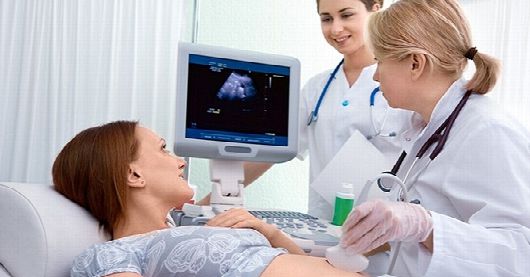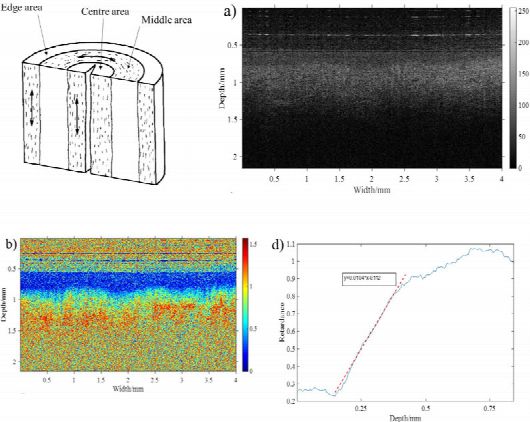projects

Our Vision
Vision
Our Vision
The timing of birth is crucial to reproduction. Up to 13% of babies are born prematurely at annual costs to the National Health Service of £1 billion more, and 10-fold higher, than for term babies. Preterm birth (PTB) also accounts for the majority of deaths of structurally normal babies, and one out of every 4 babies born before 28 weeks suffers handicap, with socio-economic burdens on families, many parents often having to give up work to care for their child. Prevention of PTB is limited by lack of accurate prediction of risk. Our group has been exploring the technique Electrical Impedance Spectroscopy (EIS) for assessing cervical tissue composition by recording its electrical "resistivity" - cervical impedance - to the injection of a small electrical current. Our thinking is that if we can detect the changes in the cervix several months before labour starts we can predict women who will deliver prematurely.
Our preliminary studies have shown that women at high risk of premature birth (because they have had premature births before), may have lower cervical impedance between 20 and 28 weeks than those who do not. Our current studies (ECCLIPPxTM) are aimed at confirming these preliminary findings by larger studies. We have improved the Sheffield EIS device and are currently studying various groups of pregnant women. We aim to determine whether EIS will improve our ability to predict, prevent, and treat preterm labour and birth, by comparing it to current screening methods such as the fibronectin swab test and ultrasound scans of the cervix. We will also undertake some preliminary cost analysis of EIS compared to standard current care.
Background
Background & Statistics
Up to 13 million births worldwide are preterm. With such global incidence rates, over 130 million pregnancies (up to 10 million of who are at high risk) may potentially benefit from accurate cost-effective screening for preterm birth annually. Accurate prediction of risk by EIS may inform preventive clinical care. It may also improve decision-making regarding women who present in hospital with symptoms of preterm labour, as only 20% will deliver preterm, and >25% of in utero transfers to other hospitals for suspected preterm labour will remain undelivered after transfer. EIS may enable more prompt prevention, transfer to more appropriate care facilities and better surgical cervical support (cerclage) if insufficiency is better defined.
Several recent clinical reviews and executive summaries have highlighted the clear need for new/improved screening methods for preterm birth. Our series of studies – ECCLIPPxTM - is therefore highly timely. Currently, the most commonly used methods for screening for preterm birth are ultrasound cervical length (CL) and qualitative vaginal swab fetal fibronectin determinations. Both techniques have modest predictive values in high-risk women but have no cost-effective utility in unselected pregnant women in whom interventions based on CL alone are often unproductive. Progesterone treatment for at-risk women, cervical cerclage for proven cervical weakness, and the use of drugs to suppress preterm labour, can prolong gestation, but their utility for prevention of PTB has been restricted by a lack of accurate and prompt identification of women who may benefit.
Development
Development Stage
The Sheffield Mark V device, the latest version of the cervical EIS device for pregnancy studies, was completed and adopted for clinical experimental ECCLIPPxTM studies in January 2014. It is a major development over previous versions of the device and is designed to reduce inter test variability, simultaneously make measurements sensitive to tissue at multiple depths and interface to a clinical trial database. These improvements are continuing throughout the clinical phases of the ECCLIPPxTM studies to improve the potential application of the Sheffield Mark V EIS device as a platform technology for use in the clinical arena. (UKCRN ID - 15057)
Ancillary/Related Projects
The Vaginal Microbiome Sub-Study
It has been well recognised that spontaneous pre-term birth is often associated with uterine infection and inflammation but the mechanism and pattern of this association is unclear. Using modern techniques we will profile bacteria in the vagina from both women that deliver pre-term as well as that from those who deliver at term. This will give us additional useful information.
Healthcare
Impact & Healthcare Benefits
Prompt and improved identification of preterm birth risk by our studies will enable better care. This is possible through the administration of drugs such as the hormone progesterone, or others within the family of pain relief medication, known to prolong pregnancy. It may also help us to identify the "weak" cervix, a condition that continues to defy accurate diagnosis, so that a stitch can be more appropriately inserted round the cervix of those that truly need this, and avoided in those that do not need this. For women with symptoms of preterm labour cervical EIS may well identify those who are more likely to progress to birth than others, so that treatments to prepare the baby's lungs for birth, delay the birth, or ensure that birth occurs in an appropriately staffed and equipped health care facility can be provided. Most preterm births occur in women with no risk factors. At present there is no accurate method of screening all women. We are therefore carrying out studies on a cohort of low risk women also, to determine whether EIS can be used for routine screening of all pregnant women for risk of PTB.
Our Projects
Electrical Impedance Spectroscopy
Primary Investigator - Prof. Dilly Anumba
Electrical impedance spectroscopy (EIS) involves the measurement of transfer impedance over a range of frequencies, and to estimate the tissue’s complex impedivity.
Polarisation-Sensitive Optical Cohere...
Primary Investigator - Prof. Stephen Matcher
PS-OCT images of human cervical tissue in middle area.
Top-left shows a schematic diagram of the cervix, with the predominant collagen fibre orientation shown by...
- Address: The University of Sheffield, Western Bank, Sheffield, South Yorkshire, S10 2TN, UK
- Phone: +44 (0) 114 215 9674
- Email: info@ecclippx.co.uk



